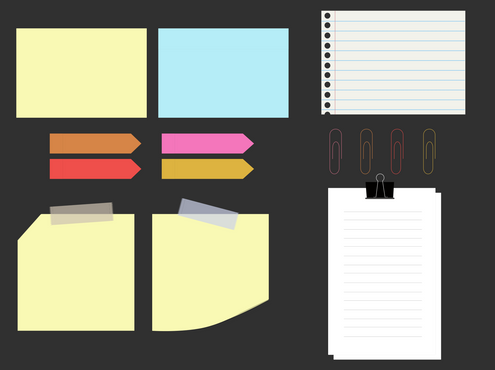6th Oct 2021
How to Use Side Tabs and Legal Tabs Properly
When it comes to side tabs and legal tabs, you need to make sure you are using them correctly. Here is a basic rundown of that process.
Did you know that the average office employee uses 10,000 sheets of copy paper a year? And in places like legal offices where there is a high paper turnaround, you can imagine that this number is much higher.
With the amount of paper your office prints on and receives on a daily basis, you need an efficient way to store your documents while keeping them organized.
Legal and side tabs are the perfect way to do this, but you need to use them properly. Otherwise, you'll end up with a confusing organizational system that does more harm than good.
If you're ready to increase your office organization with side tabs, keep reading for everything you need to know on how to use them the right way.
Organize Your Loose Papers Into Categories
Before you start organizing your documents with tabs, you need to organize your papers by category. This is especially important if you have a large number of papers you need to sort.
Start by clearing off your desk and the floor. Consider getting a few cardboard boxes or colored pieces of paper that you can label with each category.
You may have some things you can shred, for example, or you might need to archive old documents.
If you have any legal-size papers, make sure to mark them or put them aside, as you may need legal-size tabs for them.
If you have some papers leftover that you don't need to put in a binder yet (but will soon), then put these somewhere you can find them easily, like in a wall file.
Decide on the Types of Tabs You Need
Once you've organized all your documents, it's time to decide on what kinds of tabs you need.
First of all, decide on when you'll need to use tabs. If you go to court a lot, for example, you'll need a good amount of legal exhibit tabs. If you only have a few piles of documents that you need to organize into binders, then blank tabs that you can label yourself might be good enough.
Next, decide on the level of organization you need. If you need a simple sorting system, then side tabs with numbers are a good choice.
If you more detailed organization, get some legal bottom tab dividers to help you further organize the documents in each side tab. You can also get AA-ZZ side tabs if you have a lot of documents to organize.
Get the Right Binder
Next, you want to make sure you have a good quality binder. The typical 3-ring binder is 12 inches long and 10 inches wide so that it can fit standard-sized paper.
You need to get a good quality binder, especially for important documents that you need to transport or access often. You don't want to have to keep replacing the binder or worse, have everything fall out of it at a critical moment in court.
If you know that you will give a binder to clients, such as with wills and estate planning, you need to give them something durable and professional.
For example, this estate planning binder from Exhibit Indexes can be customized with the client's name and with the lawyer's contact information.
Make a Table of Contents
Organizing your documents doesn't stop at adding tabs to a binder. If you use number or letter tabs, you need to know what each of these corresponds to.
This process can be as simple as creating a one or two-page document with a chart showing what each letter or number means. If you have bottom tabs as well as side tabs, make sure to add all of them to your table of contents.
Print your table of contents, hole punch it, and place it at the front of the binder for quick reference.
Remember to save the table of contents on your computer and replace the paper copy any time you add updates.
Get Enough Tabs for Copies
The legal profession often requires you to assemble identical binders of documents, especially when you're going to court.
You need to keep this in mind so that you're not scrambling for more tabs at the last minute.
If you'll need to put a lot of documents in one binder or you need meticulous organization, think about getting a set of collated exhibit tabs for each binder.
Think about how many people at the office need identical binders, and always make sure you have at least one extra to keep in the office.
Treat Your Tabs With Care
Office supply costs can start to add up fast, so you want to make sure your tabs last you as long as possible.
To best care for documents, make sure you keep them in a cool, dry place. This will help keep the paper from wrinkling or losing shape due to humidity.
You also want to keep your tabs and documents away from direct sunlight, as this can fade the inks and colors.
Make sure to keep your tabs away from food or drinks as well, as you don't want to keep having to pay for replacement tabs.
When storing unused tabs, keep them neatly together with a clip or a rubber band. Store them in a box so that they don't get knocked over or folded if something is put on top of them.
Use Your New Side Tabs the Right Way
Side tabs and legal tabs can be the key factor in making sure your office paperwork stays organized and doesn't get lost.
Better yet, you'll know how to organize any new documents as you get them, all while making sure your tabs last as long as possible.
Our tabs at Exhibit Indexes are laminated so that they're durable and resist wear-and-tear. They come in multiple sizes and types so you can choose the best tabs to fit your needs.
Check out our wide variety of side tabs and get started with your document organization today.




